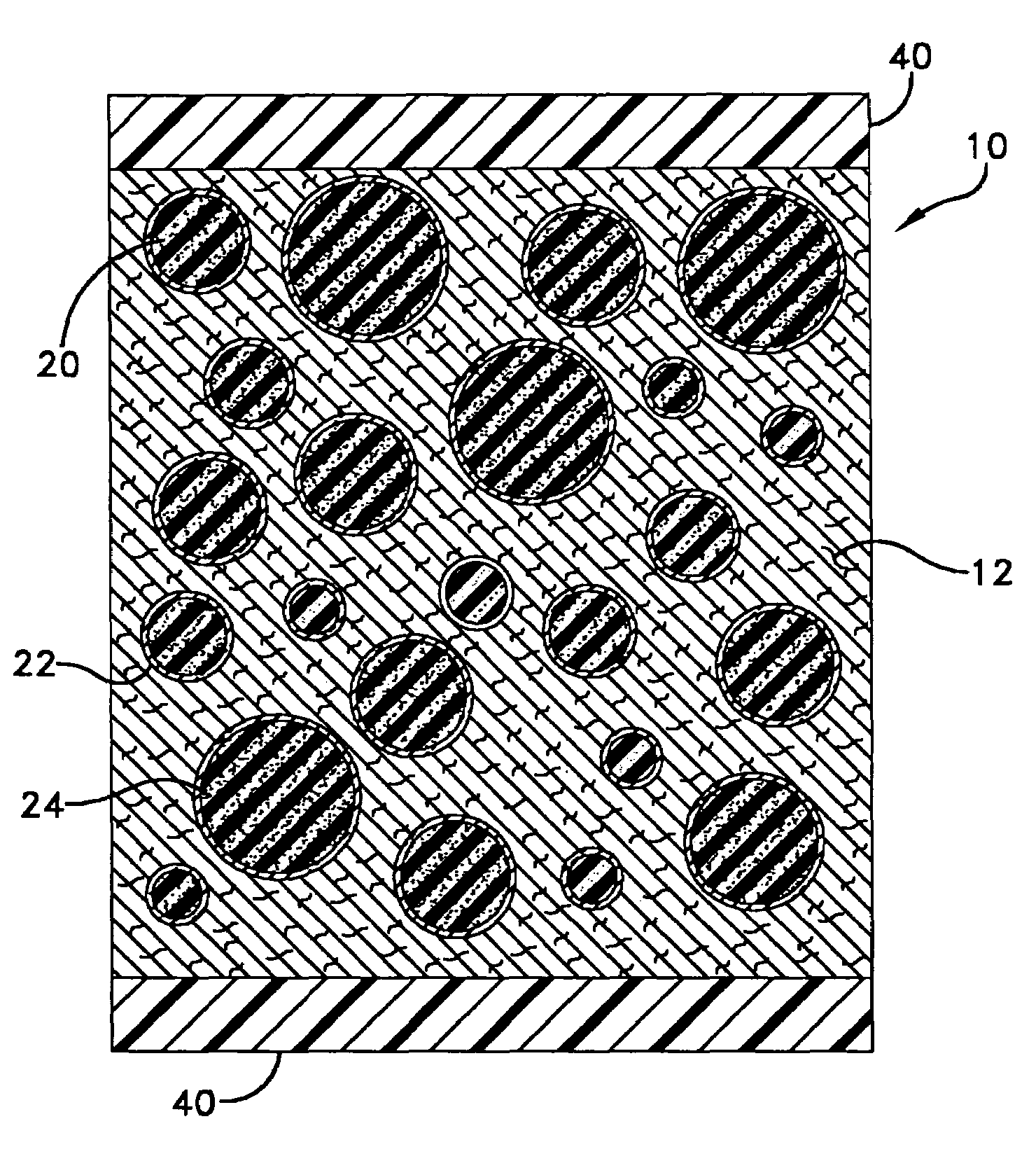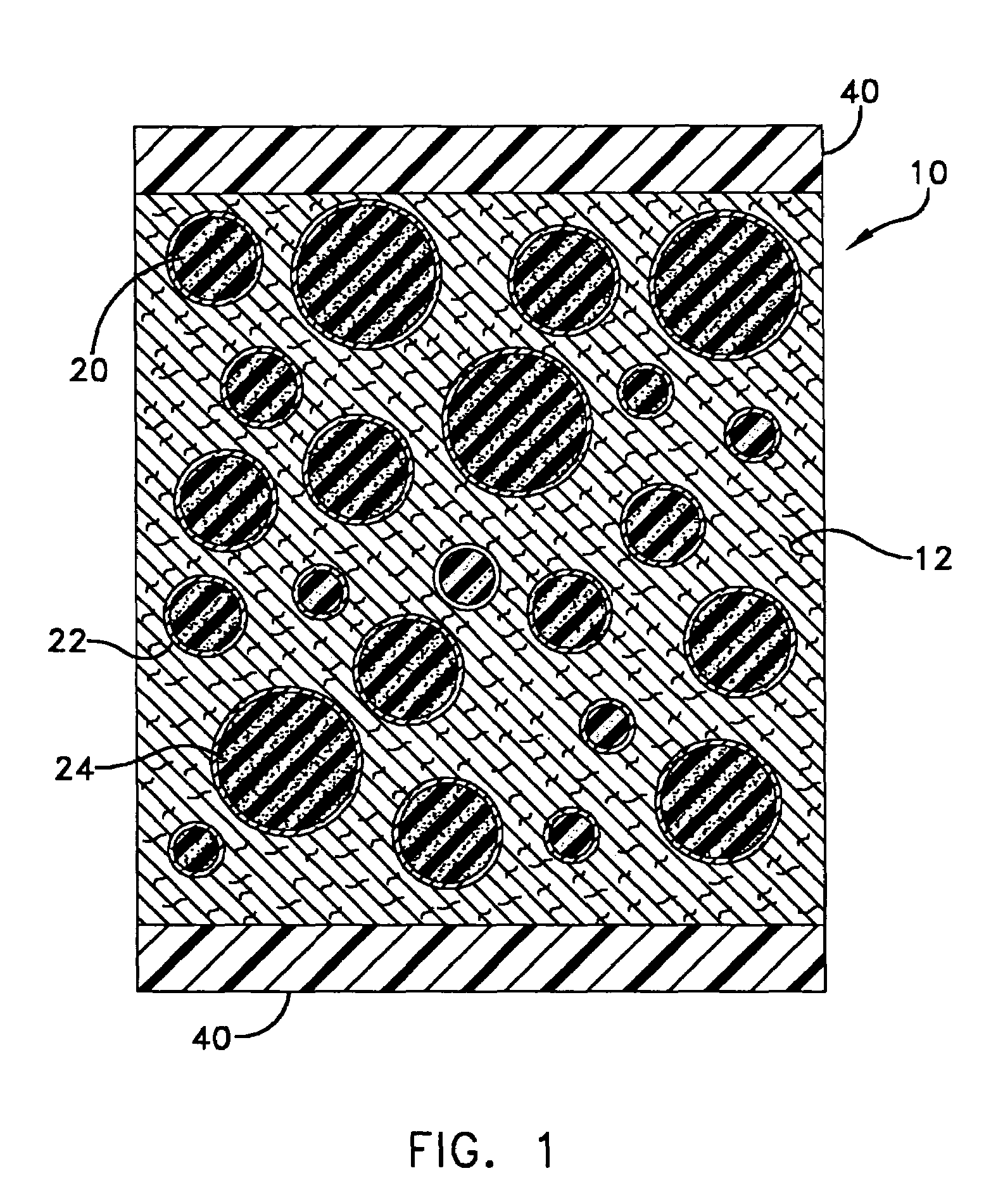Pressure resistant anechoic coating for undersea platforms
anechoic coating and pressure resistance technology, applied in the field of anechoic composites, can solve the problems of presently used composites that may collapse under shock pressure, deterioration of acoustic properties, time-varying shear and bulk deformation within the matrix, etc., and achieves small wall thickness, dissipation of acoustic energy, and resistance to deterioration
- Summary
- Abstract
- Description
- Claims
- Application Information
AI Technical Summary
Benefits of technology
Problems solved by technology
Method used
Image
Examples
Embodiment Construction
[0022]Referring now to the drawing wherein like numerals refer to like elements throughout the view, one sees that FIG. 1 depicts a composite material 10 of the present invention in which the composite material is contained by plates 40. The plates 40 are preferably fiberglass or an alternate composite material known to those skilled in the art. The combination of the plates 40 with the composite material 10, shown in the figure, can be used as a structural element such as a panel or shell used in the construction of an undersea vehicle (not shown).
[0023]The composite material 10 comprises a matrix material 12 having inclusions 20 of spherical shells 22 in which each shell encapsulates a dynamically-active core 24. The spherical shells 22 are preferably made of glass; however, any suitable substitute known to those skilled in the art may be used.
[0024]The core 24 is preferably TECHTHANE or a similar material known to those skilled in the art in which the core has rubber-like propert...
PUM
| Property | Measurement | Unit |
|---|---|---|
| bulk modulus | aaaaa | aaaaa |
| density | aaaaa | aaaaa |
| acoustic energy | aaaaa | aaaaa |
Abstract
Description
Claims
Application Information
 Login to View More
Login to View More - R&D
- Intellectual Property
- Life Sciences
- Materials
- Tech Scout
- Unparalleled Data Quality
- Higher Quality Content
- 60% Fewer Hallucinations
Browse by: Latest US Patents, China's latest patents, Technical Efficacy Thesaurus, Application Domain, Technology Topic, Popular Technical Reports.
© 2025 PatSnap. All rights reserved.Legal|Privacy policy|Modern Slavery Act Transparency Statement|Sitemap|About US| Contact US: help@patsnap.com


